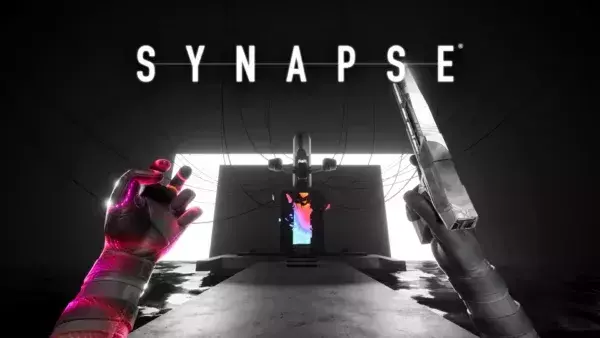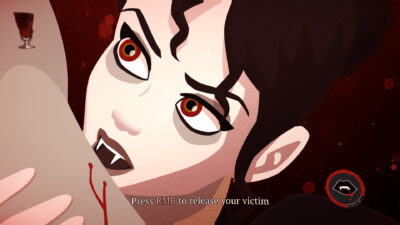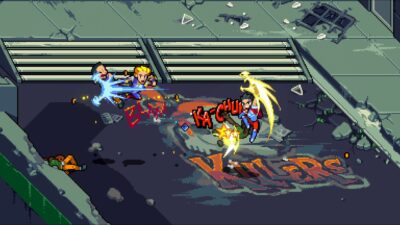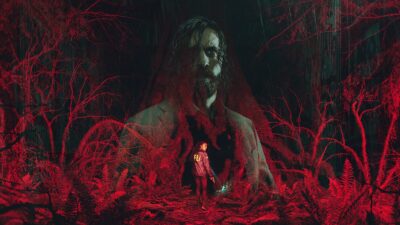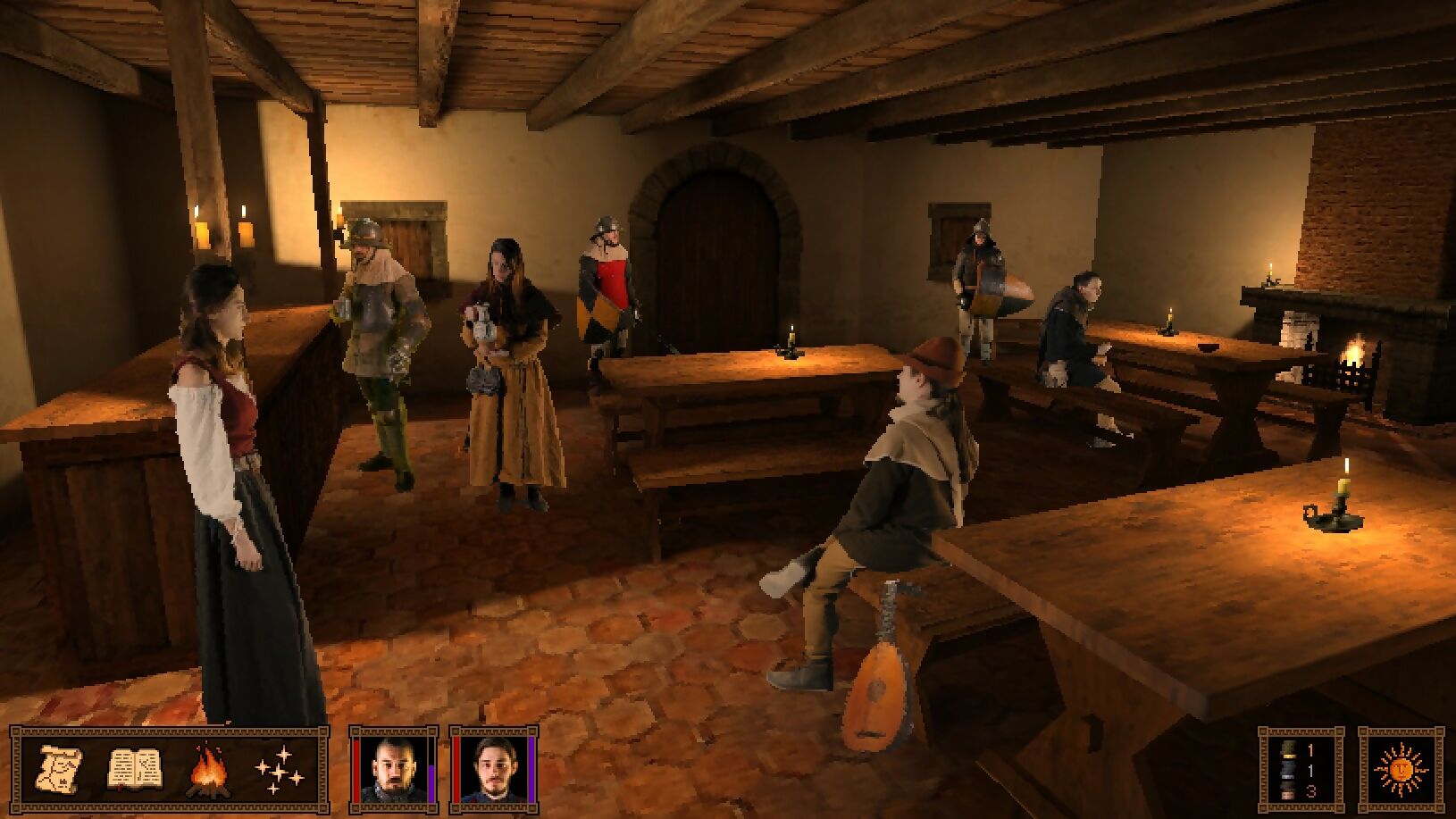
Looking at screenshots of Call of Saregnar, you might be forgiven for thinking it’s a long-lost RPG from the 1990s. The characters are photographed actors, the textures are grainy, and the environments are made up of flat 2D objects. In reality, Call of Saregnar’s a brand-new game from Slovenian designer, Damjan Mozetič. Envisioned as a return to the western RPGs of old, it draws from titles like Might & Magic VI and The Elder Scrolls II. The biggest inspiration, though, comes from Mozetič’s first love: 1993’s Betrayal at Krondor.
For Mozetič, Betrayal at Krondor was a formative experience. At age 14, he managed
to get his hands on a pirated copy of the game – a practice not uncommon at the time, given the state of the Slovenian market after the break-up of Yugoslavia in 1991. The experience was like nothing he’d ever played before, and led to several late nights spent at a computer with a dictionary at hand to compensate for his basic understanding of English.
“I’ve wanted to make a game like Betrayal at Krondor since forever, because the sequel was never released,” says Mozetič, referring to Krondor’s cancelled follow-up, Thief of Dreams.
“I mean, there was Return to Krondor, but that was not the game that was originally supposed to be released.”

There are a number of towns to explore in the game, all complete with NPCs, including the villages of Romar and Ergendon.
Spiritual successor
“Krondor had it all,” Mozetič enthuses. “It had great characters. It had a great world, which was Midkemia from (the series’ author) Raymond E. Feist’s books. So it had this really nice background to put a story in, and Neal Hallford, the author of the story and the characters, did a great job.”
Call of Saregnar is in many ways a spiritual successor to the original Krondor. Not only do both feature real actors in the role of non-playable characters, but the two games are also divided into chapters and include an open world you can explore almost from the beginning, populated with new missions depending on the chapter. They also feature turn-based combat and strategy elements, with the player able to launch sneak attacks on enemies or fall into ambushes in either game.
Making a game like this isn’t easy: financing and workflow aside, Saregnar uses techniques that aren’t common in contemporary game development. This often means educational resources are hard to come by, with his game’s aesthetic being particularly difficult to get right.
“There’s no info online whatsoever,” Mozetič says of his approach to Saregnar’s graphics. “I had to figure out by myself how to do it. For example, the trees were interesting. I eventually got Charles Thomas, a freelance shader programmer from France, to help me with a shader. I wanted those trees to have a shadow on the ground, so he helped me with that. Because, as the sun moves around, the shadows (need to move). The trees are still billboards, they’re 2D, but there’s a technique we use to project the same shape of the tree on the ground. It ended up looking really nice.”

Thanks to a custom shader, Call of Saregnar’s trees now have shadows.
A stroke of luck
There’s also a logistical problem of finding enough actors to populate the world’s locations. When you think of RPGs, you tend to think of towns and villages filled with roaming NPCs and quest-givers. For Mozetič, this presented the issue of finding and casting a large group of performers to fill the roles.
Luckily, though, he soon crossed paths with the Principesca Contea di Gorizia, an Italian medieval re-enactment group (of which he’s now a member) which comprised several fans of classic RPGs. They were more than willing to help out, and even provided some of their own costumes for the roles.
“The characters are the biggest challenge, because I had to do things that weren’t traditional game development,” says Mozetič. “It’s not development, it’s not programming. It’s getting people together and organising the photo shoots and hoping that everything will work right – so it is a big relief when it does. I currently have about 20 characters, with some of the same actors wearing different clothes, but since I’m doing low-resolution, I can get away with having the same face repeating in other scenes. I also photographed the characters from different directions, so I can show them from the front or from the side or from the back.”

Mozetič chose to use real actors in order to give players a real person to relate to.
Collaboration has been key to the development of Call of Saregnar. Though Mozetič wants to keep his team small in order to avoid moving away from his central vision – a move that has resulted in a somewhat protracted development – everyone who’s come on board so far is equally passionate about the game. Composer Tony Manfredonia, for instance, has produced several medieval-style tracks inspired by Krondor’s score and other similar games from the era, while sound designer Benjamin Reichstein has worked hard to nail the warm, rough, retro sound that fans expect.
If you’re wondering when we will see Call of Saregnar on digital storefronts, it’s not anytime soon, according to Mozetič. The game is still relatively early in its development, with a Kickstarter and demo being the next target the team are working towards. After that, Mozetič hopes he’ll be able to quit his nine-to-five job and work full-time on the game, as well as bring on some new faces in order to speed up development.
With Call of Saregnar, Mozetič is hoping to hark back to a simpler time for western role-playing games, where the focus was more on evoking a sense of atmosphere through adventuring, and telling a story rather than providing complicated combat systems or increasingly detailed environments.
“There are many action games around, but RPG games like mine, there are basically none,” says Mozetič. “I really want to make a game that differs from (other role-playing games). I’m trying to tap into that niche market, which I think people don’t even know they’re missing.”

Taverns are areas where players will pick up information to complete questlines.


